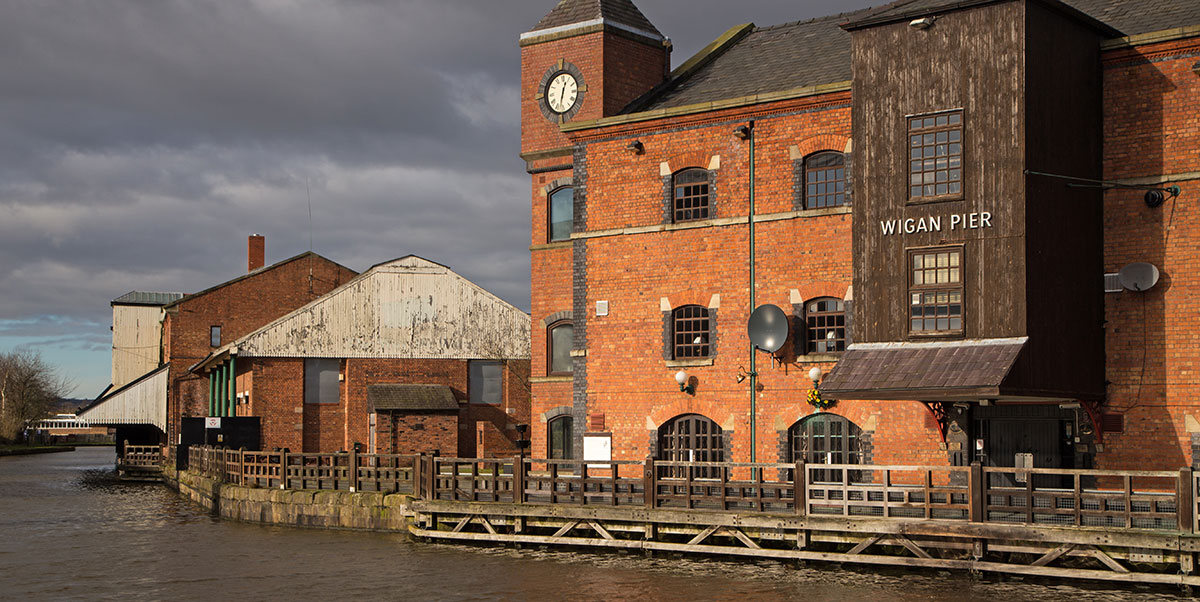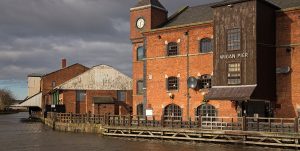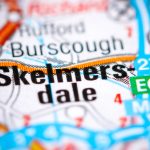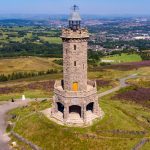
The Textile and Mill Town that Outgrew the Industrial Revolution
Found slightly to the west of the heart of Greater Manchester, Wigan has a population of more than a hundred thousand people. However did you know, that it sprang up as the home of a rogue tribe of Celtic miscreants? Or that the wider borough contains over three hundred thousand people? Wigan is an interesting place.
Whether you live there are just passing through or fancy a holiday with a difference, Wigan is one place you can rely on for staycation fun. With loads of things to see and do, pop it on your list of potential holiday hotspots and have a read over this article, to find out more.
Let’s start with the early days of Wigan… Where did it come from and who the hell were the Brigantes?
The Early Days of Wigan
Wigan was the chief territory of the Brigantes tribe, away back before recorded history. They were a Celtic tribe known to be the biggest in England, with footholds in Ireland, as named by the Greek geographer Ptolemy. They controlled a large section of land in England, with Wigan being central to their towns.
The Romans arrived in the early centuries and battled them until they were defeated. The last of the Brigantes were gone by the time of the Roman invasion circa 0 AD. The Romans established one of their forts on the ruins of Wigan, calling it Coccium. Although historians don’t have precise evidence, the measurements recorded as distances between it and Manchester, as well as Ribchester, can affirm that Coccium was either in, on or near, Wigan.
Early 00s archaeological excavations have uncovered Roman military ruins near the ditches at Ship Yard off Millgate. It is believed that these might have been a barracks stationed just outside of the town proper. When the Romans left Britain in the first few centuries, the Vikings were the next to attack everything.
Once the Vikings left, the Anglo-Saxons took over, placing Wigan in the kingdom of Northumbria until Wessex captured it. In the 10th century, Wigan was treated to a huge Scandinavian population influx, the reason being that they had been evicted from Ireland. To this day, some of the street names of Wigan are Scandinavian in origin, which sets it apart from other towns and cities of a similar size.
Wigan wasn’t mentioned in the Domesday Book – we checked – written in 1086, after William the Conqueror moved in. The next mention isn’t until the 13th century… but we know Wigan still existed during this time. Sources say that it would have had a population of between 2,500 and 3,000 people at the start of the 13th century.
Let’s leave off of the history for a moment and skip forward. What are the most interesting facts about Wigan nowadays? We found out…
The Best Bits About Wigan
Every town we have ever summarised for all you lovely tourists comes with a list of some of the best, funniest, or most interesting parts to it. Did you know that Manchester was originally called Mamecester? Or that Desi Pubs were first made famous in West Bromwich? If not, you should read our fascinating guides more often.
Some of the best trivia about Wigan includes:
- Heinz baked beans were invented by Wigan. This has to be the biggest and best claim to fame from any town or city in our lists. If you live in the UK, you know that these beans power the nation.
- 90s rock band “the Verve” were formed and began their careers here.
- George Orwell visited in the 1930s and called it a few unwelcome names. It was not received well. Bill Bryson visited in this century and commented on how surprised he was to find it a handsome town.
- Northern Soul music, an almost forgotten sound outside of the north of England, is said to have originated here in the 60s.
Wigan is an interesting place when you start to look at the facts, figures, and famous faces. We’ll get to those in a moment, though. First, let’s get back to the town history.
Wigan In the Middle Ages
Middle-Aged Wigan really started to grow. In 1246, King Henry III granted a town charter to a local lord, who then started holding a weekly market. In 1257, they were granted another charter, this one would likely have allowed them to hold an annual fair, which was like a large trade event in those days. It would have attracted traders from all over the borough and would have lasted for about a week.
In 1360, the Gough map was created, and it recorded the position of Wigan. We know for sure that Wigan was on this document, but we don’t know the exact date of its creation – or even who made it. The map is thought to be one of the earliest ever made in Britain and documents much of England. It was in the possession of a man named Richard Gough right up until 1809, when he gifted it to the Bodleian Library. Anyway, Wigan was on it, confirming our suspicions that it definitely existed at the start of the middle ages.
Edward II came to visit Wigan in 1323 after a rebellion in the area some years before that. He stayed in a priory nearby and one of his advisors described it as being as big as Warrington, but better built!
The 1640s brought more unrest to the area in the form of yet another Civil War. You might not realise it, but England had to have several civil wars to get to the delightful democracy that we know and love today.
The Earl of Derby used Wigan as his Royalist headquarters. From thence, he captured Preston but failed in four other attempts to capture different cities. He travelled to the Isle of Man with his army, only for Wigan to fall to the Parliamentarians in his absence. The invaders came into town, pillaged, and raped everything in sight, disabled the defences, then retreated, all within a record two hours. Wigan popped up again as a resting place for the losers after the Battle of Preston.
In 1651, there was yet another civil war (the third), during which the Battle of Wigan Lane was fought. This occurrence saw cavalry released into the town’s streets and real fighting taking place in the narrow alleyways. The parliamentarians managed to stave off repeated cavalry charges from the Royalists – who were hunted down as they eventually broke and fled into the countryside. The Wigan Lane Monument went up in 1679 to commemorate the battle.
As the civil wars finally died down and Wigan was able to assert itself as a sleepy market town again. In 1720, the addition of a town hall was contributed by members of the council. It was knocked down in 1869 but would have seen many important decision made within its walls. Later in the 1700s, Wigan would find coal and be dragged into the land of industrial mining. The Leeds and Liverpool Canal was being built and was actually re-routed to go through Wigan, since it was producing coal.
Wool was dyed and fulled out here, and later, cotton would be woven into fabric. Power looms arrived in the start of the 19th century, allowing the water of the canal to bypass manual operation of the weaving process. In the 1830s a railway line was added, then, in the 1850s, 50 collieries dotted the landscape. While other places had a railway that transported people into town, the railway from Wigan exported coal all over the country, allowing them to make a profit and fuel the Industrial Revolution.
Wigan developed a pewter industry, presumably as a by-product of the coal mines. By the start of the 17th century, the population had been around the 4,000 people mark. However, the influx of weavers and metal workers, clockmakers, and dyers, all made for a population jump of around 2 thousand people by 1800. By 1850, this population was 11,000, then it jumped again until it hit 35,000. By 1901, there were 60,000 people living n Wigan.
In the 1750s, a waterworks was added to Wigan, allowing the people to enjoy fresh water. 1790 saw an ironworks added and the coal mines increase. In the 1800s a cemetery and a hospital opened. A market hall was built, and a few public parks were added. A library was built, the population boomed, and coal was still widely used right up to the 20th century… when the Industrial era waned, and the textile industry started to die off.
1901 saw electric trams in the street, with electric streetlighting eventually replacing gas lamps. Buses replaced the trams around 1925 – by which point Britain was emerging from the first of the Great wars. In 1937 George Orwell wrote ‘The Road to Wigan Pier’, which detailed the bleak poverty of the town… despite its beautiful architecture. In the 20s and 30s, unemployment was rife, and the government decided to clear up the slums. Council housing was added, with many more coming after WWII.
WWII saw further loss of life as the young men from the town died in the trenches of Europe. Although many grieved this tremendous tragedy, what interests the general public most about the Second World War in Wigan is the series of tunnels that locals used as air raid shelters. These tunnels ran under some of the mills – and weren’t closed and sealed up until 2017!
In ’74, Wigan was added to the Greater Manchester region and, in the 80s, Wigan pier was refurbed. Museums were erected to commemorate the town’s industrial heritage. The 90s saw the addition of a shopping centre and then another, in 2007. The population was a recorded 81k at the turn of the century, but has since grow to be over 100, 000 people.
Modern Wigan is still a town that has large unemployment figures and we’re not sure this will ever change. Just like other places, more investments need to be made in places like the town centre, the shopping malls, and the surviving industrial processes that still take place in town.
All this being said, Wigan thrives because of its people. They are the type of hardy northerner that has seen it all and is no longer surprised by anything. They are to be treasured, if only for their staunch resilience and good old British grit. If there was ever a place that relied on determination to continue, it was Wigan. And we think that makes it one of the best places in the UK.
Famous People from Wigan
All the towns and cities in England have at least one famous person that originated there. We turned our attention onto Wigan to see if we could find out exactly who those people might be. As a result, we are delighted to present you with the Five Minutes Spare favourite famous people to have come out of Wigan.
- Margery Booth, who was simultaneously a spy during WWI and an opera singer.
- Richard Ashcroft – and the rest of Verve – was/were born here.
- Kay Burley, a newsreader for Sky, is a Wigan girl.
- Brian Finch, who co-wrote over 100 episodes of Corrie, is from Wigan.
- Several footballers, including George Taylor, Danny Sonner, and Luke Lowe.
- Journalist Paul Mason
That’s not nearly all of them, either. The plethora of famous faces to have come out of Wigan is seemingly never-ending. You can view a more complete list over on Wikipedia. For now, we are going to turn our attention to the best things to see and do in Wigan, should you be there on Staycation.
Things to do in Wigan
What are the best sights to see if you are a tourist in Wigan, then? We took a look, so you can plan your next at-home-holiday itinerary accordingly.
Historic Sights and Landmarks
Although technically a venue, check out the quaint old red sandstone building at the Wigan Little Theatre. It’s a dual purpose building… you can take your Instagram shots from it just as readily as you can catch a show.
Those who appreciate religious relics and old church buildings will enjoy a trip out to the Church of St Wilfrid. This steeple can be seen from most places in town and the delight of the old building is tripled by the fact that it is still in use. While not everyone knows about the churches of Wigan, just about everyone in town knows what you mean if you say you went to see the face… These two town landmarks couldn’t be more different from one another… yet they describe Wigan perfectly.

Image: AC Rider:Shutterstock.com
Wigan Pier is a bit of an odd duck. Wigan isn’t actually on the sea, so the fact that it has a pier with no beach is a bit out there. Instead, the Pier is on the Leeds to Liverpool canal, the same one that was rerouted to include Wigan in its route so that the coal and iron produced could be exported. The pier is a well-known hot spot to tourists, since the canal has some lovely walks.
Galleries and Museums
There are a few interesting, museum-like places in Wigan where you can go for a glimpse into the past. Check out the Trencherfield Mill for a working example of a power mill, circa the 1900s. This fantastic old building contains preserved machinery that is ripe for the school outing. Have a peek and be sure to leave a good review, so we can keep these things alive for the next generation. This mill worked right up until 1968… one of the last of its kind to switch off.
Next up, the Museum of Wigan Life does exactly what it says on the tin (to borrow from a well known advertising campaign). This place documents the past history of all things Wigan, so if you are tracing your ancestry or want to read a Wigan newspaper from the forties, this is where you go to do it.
Outdoor Attractions
There is an impressive array of outdoor attractions in Wigan for you to sink your teeth into. The Haigh Woodland Park is a firm favourite, having even reached the top spot on Trip Advisor. If that doesn’t impress you, the trees, adventure golf, high rope tree courses, and playgrounds, certainly will.
Locals love to walk their dogs at the Fairy Glen, this place sports a woodland walk to one of the most beautiful waterfalls you will see in Britain. Kids love it but do keep them on a leash… the dogs sometimes jump up.
You can find another opportunity for woodland walks at Borsdane Wood, find a lake at Worthington Lakes, visit a public park to sunbathe at Mesnes Park… the list of options in Wigan is endless, particularly when it comes to outdoor opportunities.
Sports and Recreation
One of the favoured attractions in Wigan among tourists and locals alike, is the Old Courts. Although it looks like a landmark, this gorgeous building is actually an entertainment venue. If you are in the area for any length of time, be sure to check what’s on here to get a real taste of Wigan arts.
As to sports, remember to stop by the DW stadium if you want to catch a game. If not, then take the stadium tour. DW is home to the Wigan Athletic Football Club, who are a consistent team in a world of inconsistencies. You might prefer Rugby, in which case you should look out for the Wigan Warriors. Wigan is more famous for its rugby team than it is for its football team… don’t shoot the messenger.
Oh… and let’s not forget the golf club because this is Britain, after all.
Shopping and Retail
Shopping in Wigan is a great idea because there is plenty to choose from. Historically speaking, they were a market town, and they still are to this day. To the northernmost side of town, you have the Galleries Shopping Centre, besides which is the Grand Arcade, first built back in the nineties. If you are south of town, try the Hawkley Hall Shopping Precinct as it might be closer to you.
Other Important Sights to See in Wigan
Wigan has lots to see and do so it’s only right that we couldn’t cover everything. Here are some of our other favourite spots in Wigan, that we just didn’t have time to get into too much detail about:
- The Robin Park Leisure Centre and Arena is a great place to take the kids swimming, book out a hall, or attend a party.
- You can visit the George Formby statue in the shopping centre.
- Wigan Parish Church holds regular services if you wish to attend.
- Take the tipsy tour at the Two Left Feet Brewery for an adults-only afternoon out in Wigan.
- Haigh Hall Miniature Railway is a nice afternoon out if you have the funds.
We haven’t even come close to covering all the things you can see and do in Wigan. Get up north and have a look for yourself. With so much to do, there’s no chance of a rainy day stopping you.
How to Get to Wigan?
The last thing we need to tell you about Wigan is how to get there. It’s not hard to find. Start in Manchester, head west, follow the signs. It is the most western borough in the Greater Manchester area.
By Road
Follow the M61 west out of Manchester until you find the A58, then follow it to Wigan.
By Rail
Choose from Wigan North West, Wigan Wallgate or, if you live south of town, Pemberton station.
By Air
Of course, the nearest airport would be Manchester. You can get the train directly.
By Sea
Wigan is westerly but not on the sea.
Five Minutes Spare
We are Five Minutes Spare and we have a number of articles detailing everything from travelling the world to travelling your imagination. Head over to our home page and have a browse. It might just change your life.



